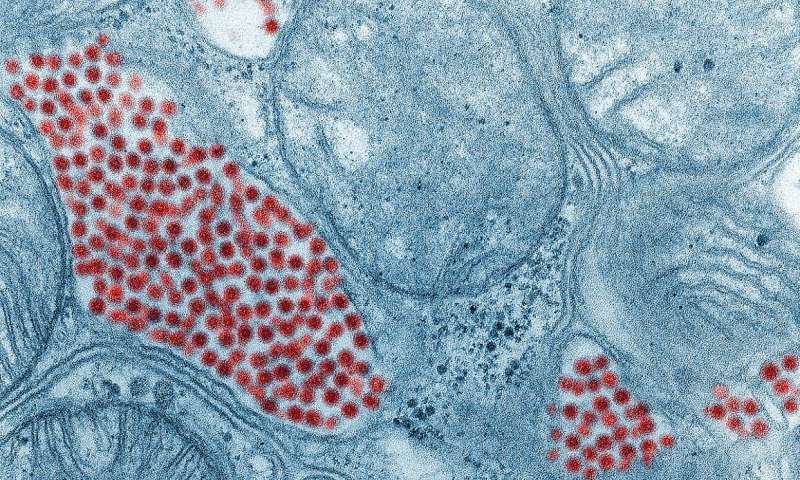
Although eastern equine encephalitis (EEE), a mosquito-borne illness, has existed for centuries, 2019 has been a particularly deadly year for the disease in the United States. As of November 12, 36 confirmed cases of EEE had been reported by eight states; 13 of these cases were fatal. In a new commentary in the New England Journal of Medicine, officials from the National Institute of Allergy and Infectious Diseases (NIAID), part of the National Institutes of Health, describe the eastern equine encephalitis virus (EEEV) that causes EEE, current research efforts to address EEE, and the need for a national strategy to address the growing threat of EEEV and other emerging and re-emerging viruses spread by mosquitoes and ticks (known as arboviruses).
There were 12 documented U.S.-based EEE epidemics between 1831 and 1959. The virus is spread between Culiseta melanura mosquitoes and various tree-perching birds found in forested wetlands. Occasionally, other mosquito species transmit the virus to people and other mammals. In people, EEEV takes roughly three to 10 days to cause symptoms. The virus initially causes fever, malaise, intense headache, muscle aches, nausea and vomiting; specific diagnostic testing may not reveal anything as EEEV is difficult to isolate from clinical samples, and testing for EEEV antibodies may be negative. Neurologic signs of EEE, which may appear within five days of infection, initially are nonspecific but rapidly progress. Most people (96 percent) infected with EEEV do not develop symptoms; however, of those who do, one-third or more die, and the others frequently suffer permanent and severe neurologic damage.
Although point-of-care diagnostics for EEE and many other mosquito-borne causes of encephalitis are not available, currently they would be of limited value in the absence of effective treatment, the authors write. So far, no antiviral drug has proven safe and effective against EEE, but many compounds are being assessed. Monoclonal antibodies have been found effective in an experimental animal model but only when given prior to infection. Patients with EEE are currently treated with supportive care, which often includes intensive care in a hospital and ventilator assistance. Patients with EEE are not infectious, and social support and counseling for both the patient and the family are vitally important given the seriousness of the disease, the authors write.
Several EEE vaccine candidates are in development but may have trouble reaching advanced development and licensure, according to the authors. EEE outbreaks are rare, brief and focal, and occur sporadically in unpredictable locations, making it difficult to identify an appropriate target population for vaccination. Efforts to develop mosquito-saliva vaccines that would be effective against multiple mosquito diseases, including EEE, are in early stages.
Source: Read Full Article






